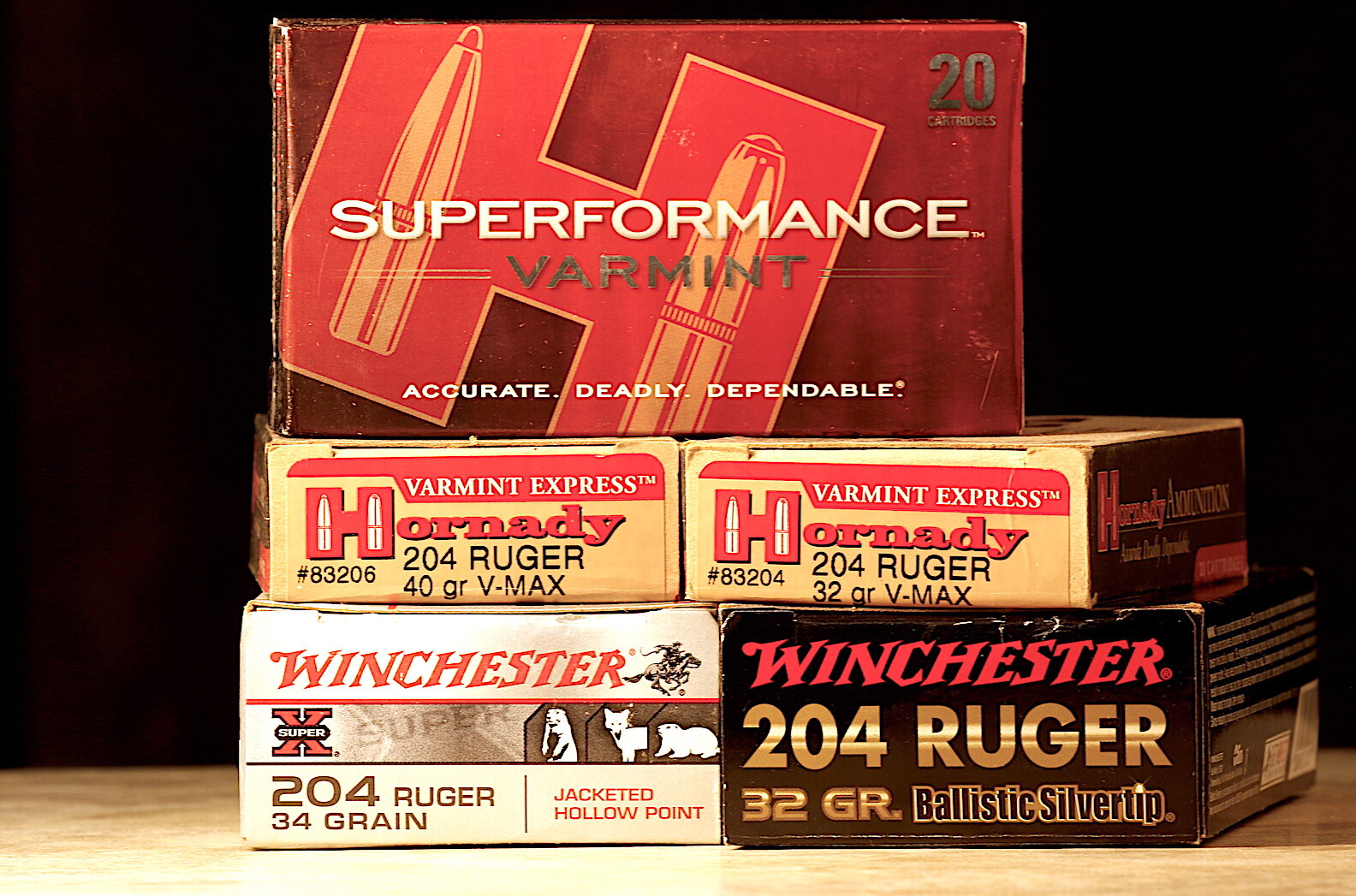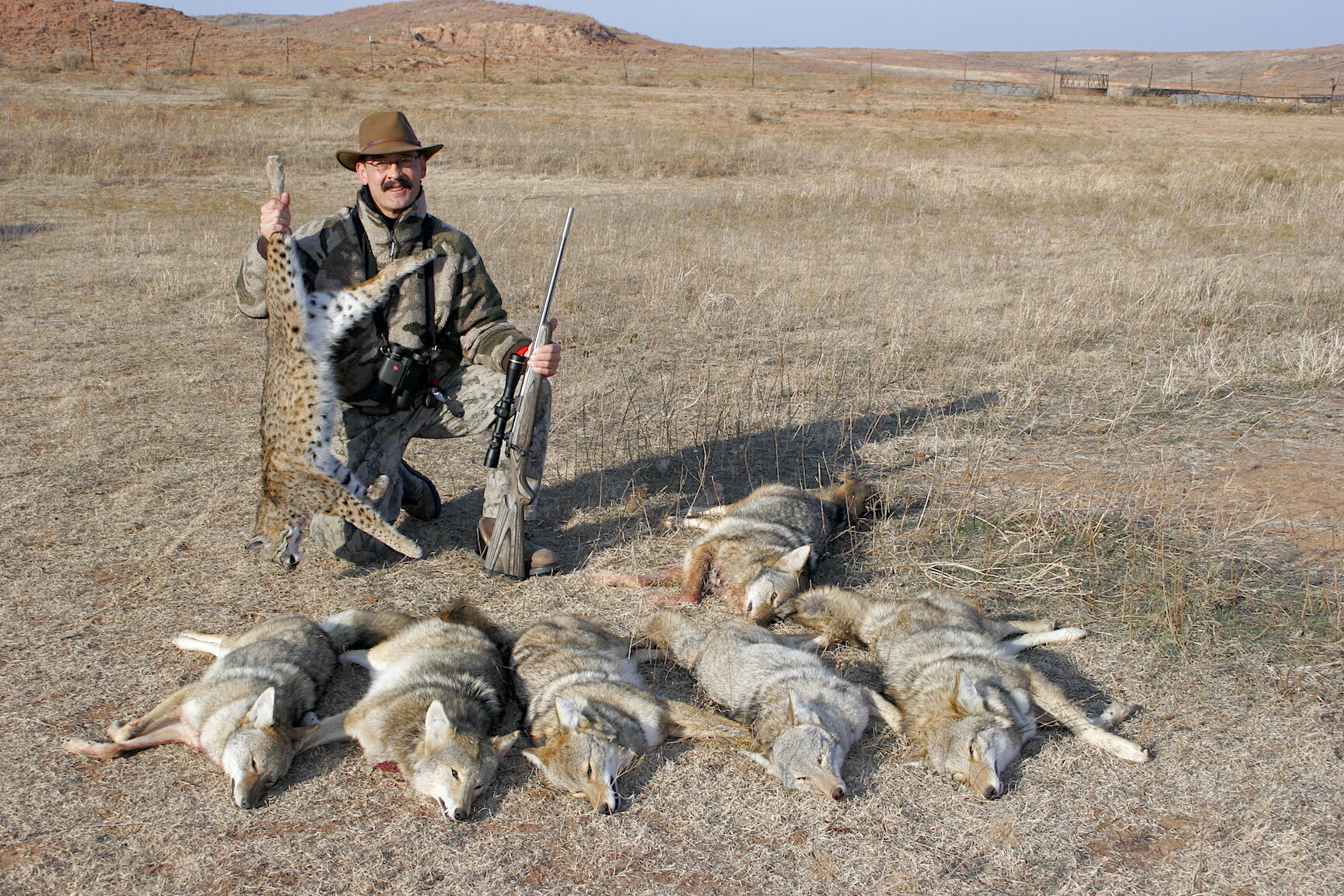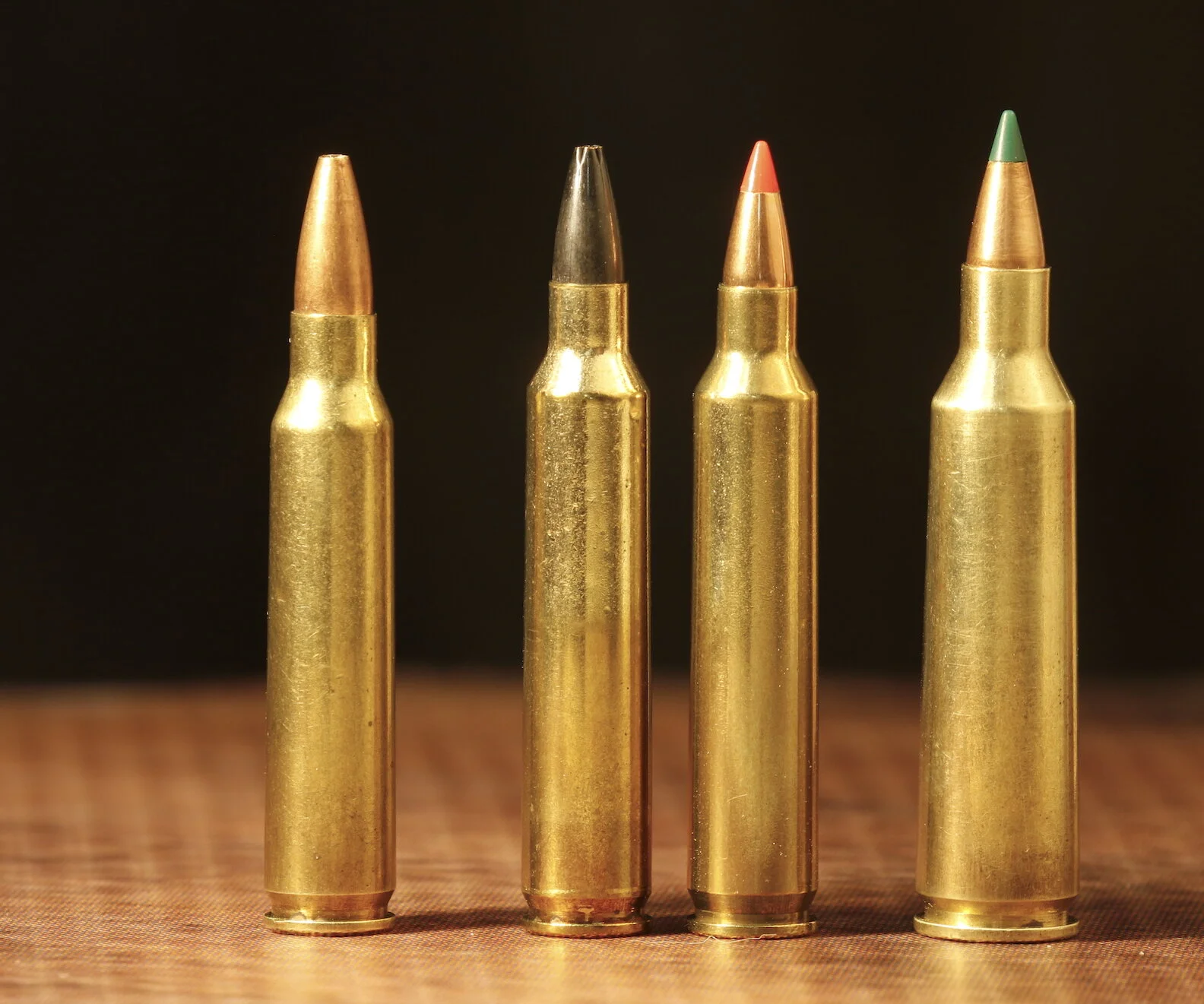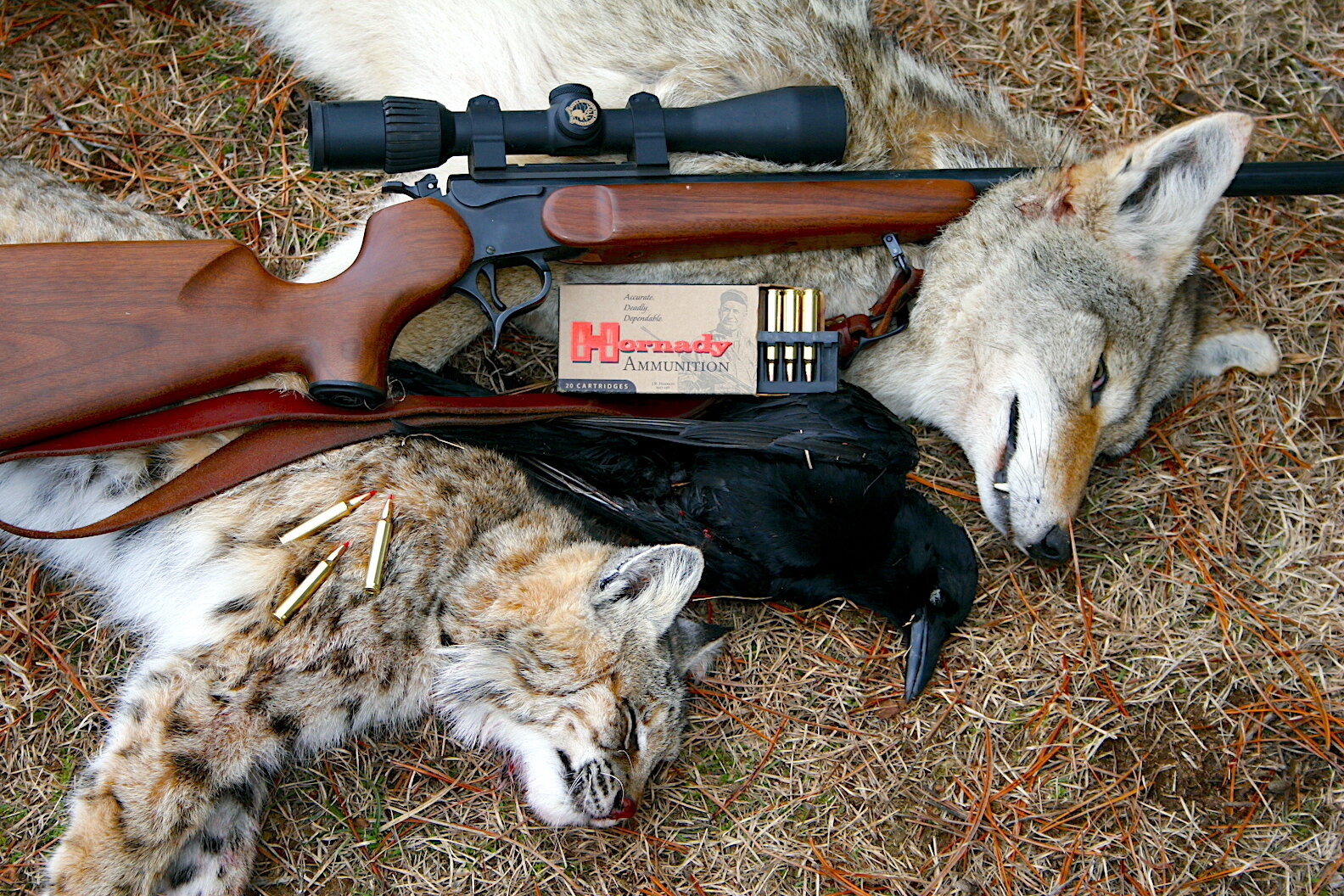The Diminutive 204 Ruger
It being spring and “rodent control season” on farms across the land, this seems an appropriate time to investigate the hot little pipsqueak 204 Ruger.
In case you’ve forgotten, this modification of the 222 Remington Magnum case was presented to an adoring (some would say bored, some would say surprised) American shooting fraternity way back in 2004, an eponymous coincidence of numbers.
Image shows headstamps of 204 Ruger cartridges.
When introduced as the first .20-caliber commercial cartridge in 2004, the 204 Ruger caught most hunters by surprise. This quickly turned to delight. This slim little cartridge is an efficient, fast, light recoiling round that's a real treat to shoot.
I don’t know how many shooters had been clamoring for a 20-caliber, but Ruger and co-developer Hornady called this one right. The 204 Ruger, the world’s first commercial 20-caliber cartridge, fired up the base and started selling guns and ammo quickly. While the fires of enthusiasm have settle to a steady glow of coals, the 204 Ruger remains a standard in our arsenal of varmint cartridges, so let’s check it out.
Paired and Compared to the 22-250 Rem.
The trajectory of this 204 Ruger is often compared to that of the 22-250 Remington. It shoots similarly flat with less noise, less recoil, and less pelt damage than its .22 caliber predecessor. Not that the .22-250 is going extinct or anything, but varmint shooters and coyote pelt hunters by the droves have added the 204 Ruger to their batteries. Why? Probably for novelty, but more likely for efficiency, cost savings, less recoil, and less pelt damage.
Image shows 204 Ruger beside 22-250 Remington, the cartridge to which is trajectory is most often compared.
The 204 Ruger stands tall beside the 22-250 Remington, the classic varmint cartridge with similar trajectory but significantly more horse power.
Those were the reasons I started shooting the 204 Ruger shortly after it appeared. A Kimber varmint model replaced my trusty Holland custom 22-250 Ackley Improved during the 2005 season, taking a few varieties of crop gobbling rodents from Wyoming ground squirrels to rock chucks as a warm up. If there were any performance differences between it and the 22-250, the only one’s that impressed me were lighter report and recoil. Seems silly to even comment on recoil with any 22 caliber or smaller, but this is not about a slap on the shoulder. It’s about seeing bullet impact. The 22-250 routinely recoils enough to throw my sight picture off target. The reduced muzzle jump of the 204 Ruger lets me watch hits and misses. And there weren’t many misses.
Going Fur-ther with the 204 Ruger
By November the Kimber was putting coyote and bobcat fur on the stretcher at a welcomed clip. I recall 100% success until I pulled one shot a bit right of center on an incoming coyote. This resulted in a shoulder hit, the little 32-grain bullet breaking up before reaching the vitals. To be honest, I suspect a similarly frangible .224 bullet would have done the same.
Image shows hunter with a Kimber 84M rifle in 204 Ruger and 7 coyotes and bobcat taken with it.
Smiling? With a fur haul like this you bet I'm smiling. So was the rancher on whose livestock these predators were suspected of preying. A Kimber 84M in a light varmint configuration turned the trick. A Leupold VX-3 4.5-14x40 lines up each shot. I was shooting Hornady 32-gr. V-Max factory loads. Believe me, sewing up one .204" diameter entrance hole rather that a large tear out the back side is a fur worker's delight.
Some cartridge aficionados might be surprised to learn the 223 Remington was not the parent of the 204 Ruger. Why did Hornady start with the rare 222 Remington Magnum case? Probably because it is a smidgen longer than the 223 Rem. without being so long that it won’t fit and function in an AR-15. Any 223 Remington rifle action will handle the 222 Rem. Mag. and by extension the 204 Ruger. By the way, the 20-caliber version of the 223 is a wildcat known as the 20 Tactical. Another wildcat is the 20 VarTarg made my necking down the 221 Fireball. But the 204 Ruger remains the only SAAMI spec commercial .20-caliber on the market.
Why Mess With Tiny?
But why mess with such a tiny bore in the first place? Novelty, perhaps. Efficiency, for sure. With just 29 grains of Varmint powder the .204 should spit a 32-grain Nosler Ballistic Tip 4,000 fps from a 26-inch barrel. Despite the relatively low B.C. rating of .206, that poison pill zeroed at 260 yards should hit about an inch high at 200 yards, about 3 inches low at 300 yards and just 12 inches down at 400. Aim for the center of El Coyote’s chest and you should hit him at any distance from the muzzle to 300 yards without worry about hold-over or -under. That's flat.
Photo shows a 32-grain 204 Ruger bullet beside a 55-grain .224 bullet and 150-grain .308 bullet for perspective.
A 32-grain Hornady V-Max beside a Sierra 55-grain BlitzKing and 150-grain Barnes .308 TSX give perspective on the tiny size of the 204 Ruger projectile.
Of course there is the issue of punch, Judy, and no feathery 32-grain bullet is going to pack much of a wallop. In fact, there are just 1,200 foot-pounds energy in that sliver of gilding metal and lead when it departs the muzzle. By 300 yards it has shed all but about 480 f.p. By 400 yards just 340 f.p. remain. Yet this has proven sufficient to tumble prairie dogs and crush coyotes quite satisfactorily, thank you. Moving up to 40-grain bullet (B.C. .239) slows things down a mite (3,750- to 3,800 fps), but boosts retained energy levels, a fair trade for many, especially when you gain wind drift resistance as well. Gravity is constant, so memorizing trajectory tables works everywhere, all the time. Wind is shifty. In open country where it blows it pays to use a bullet with the highest B.C. to insure minimal wind deflection.
Wind deflection is the biggest knock on the 204 Ruger. Hornady’s 32-grain V-Max is rated G1 B.C. .210. Compare this to the .224 40-grain V-Max rated B.C. 200 and you’ll have an instinctive feel for wind deflection. Neither is going to dodge a typical, 20 mph High Plains zephyr.
204 Ruger 32-grain V-Max
22-250 Rem. 40-grain V-Max
What might surprise you about these trajectory numbers are their similarities. Drop and drift at 300 yards are nearly identical. The 22-250 does enjoy a slight energy advantage thanks to that 8-grain heavier bullet with nearly identical B.C.
Better B.C. Options in .204 Bullets?
Berger used to sell a 55-grain BT Varmint bullet in .204. This one bragged a B.C. rating of .381! You have to step up to a 70-grain projectile with a good form factor in .224 to equal this. Alas, that 55-grain .204 slug needed a 1:9 twist barrel to stabilize. Most factory 204 Rugers are built with 1:12 twists. I suspect that’s why the 55-grain was discontinued. Berger’s .204s now top out at 40-grains, about the longest a 1:12 twist will stabilize.
If you’re into speed records, Hornady’s 32-grain V-Max Superformance 204 Ruger load is rated 4,225 fps from a 26” barrel. You could beat that with a handloaded 34-grain Nosler Flat Base Hollow Point pushed to 4,400 fps from a 220 Swift burning about 37 grains of IMR 3031, but that bullet’s poor B.C. of .113 does not recommend it for long range proficiency. The 32-grain .204 V-Max has a B.C. of .210.
Photo shows 32-grain Hornady V-Max bullets beside the long, 55-grain Berger bullets no longer made.
Years ago Berger made a long, slim, boat tailed 55-grain .204 bullet that required a 1-9 twist to stabilize. Today most 204 Ruger loads stick with 32-grain or 40-grain bullets like the 32-grain V-Max shown here.
As I see it, the best reasons for owning a 204 Ruger are seeing the hits, saving pelts, and saving money on ammo/components. In most rifles this caliber is extremely accurate, in no small measure due to the thick barrel steel that remains after drilling such a tiny bore. The stiffer the tube, the less it whips and oscillates. In a 10-pound varmint rifle a 32-gr. 204 Ruger load generates – get this – 1.96 f.p. of free recoil energy. That compares to 15 f.p. from a 30-06, 3.71 f.p. from a 22-250 Rem. Recoil is so slight that you should be able to keep the scope on target and see your hit or miss. This is of great value when targeting long-range varmints. You no longer need a spotter! Cool.
Realistic 204 Ruger Hunting Applications
For fur collectors, light, frangible .204 bullets generally punch inside and stay there for quick, if not instant, kills. No exit holes, no torn hides to stitch up. Not with every shot, but most shots. Man, I wish I’d had this advantage back when I was fur hunting to pay the bills in the 1970s.
PHoto shows two 204 Ruger cartridges flanked by similar length 223 Remington and 22-250 Remington.
Flanked by not outflanked. The extra length of the 222 Remington Magnum parent case is evident on these two 204 Ruger cartridges flanked by the shorter 223 Rem. on left and fatter 22-250 Rem on right. The 204 holds its own.
To my knowledge Texas allows the 204 Ruger for big game hunting, but I certainly wouldn’t recommend it. The right placement will result in a dead deer, but the chances for a perfect shot are not always high. I once helped a hunting buddy run down a gobbler he’d wounded with a 204 Ruger. The frangible little 32-grain V-Max bullet had fragmented on the wing bone. Let me assure you, running down a winged gobbler is a good recipe for a heart-attack.
The 204 Ruger can be pressed into service for some small game if you limit yourself to head-shots. The violence of impact can extend well into the front quarters. It’s best to load down for this work.
From birds to bobcats, the 204 Ruger handles most varmints and marauding predators. A single-shot break-action T/C is plenty accurate enough for this work. I can't remember the scope on this rig. Looks like a Weaver Grand Slam. And it appears to be riding in Talley rings, always a great choice.
Whether you hunt fox, coyotes, bobcats, jackrabbits, chucks, crows, or small ground squirrels, the 204 Ruger will work and work beautifully out to 400 yards or so. Its bark is mild, its recoil negligible and its performance outstanding. And it’s inexpensive to operate. What’s not to like?
Spomer hasn't hunted with every cartridge, but he tries to gain experience with as many as possible. So many cartridges, so little time.





















